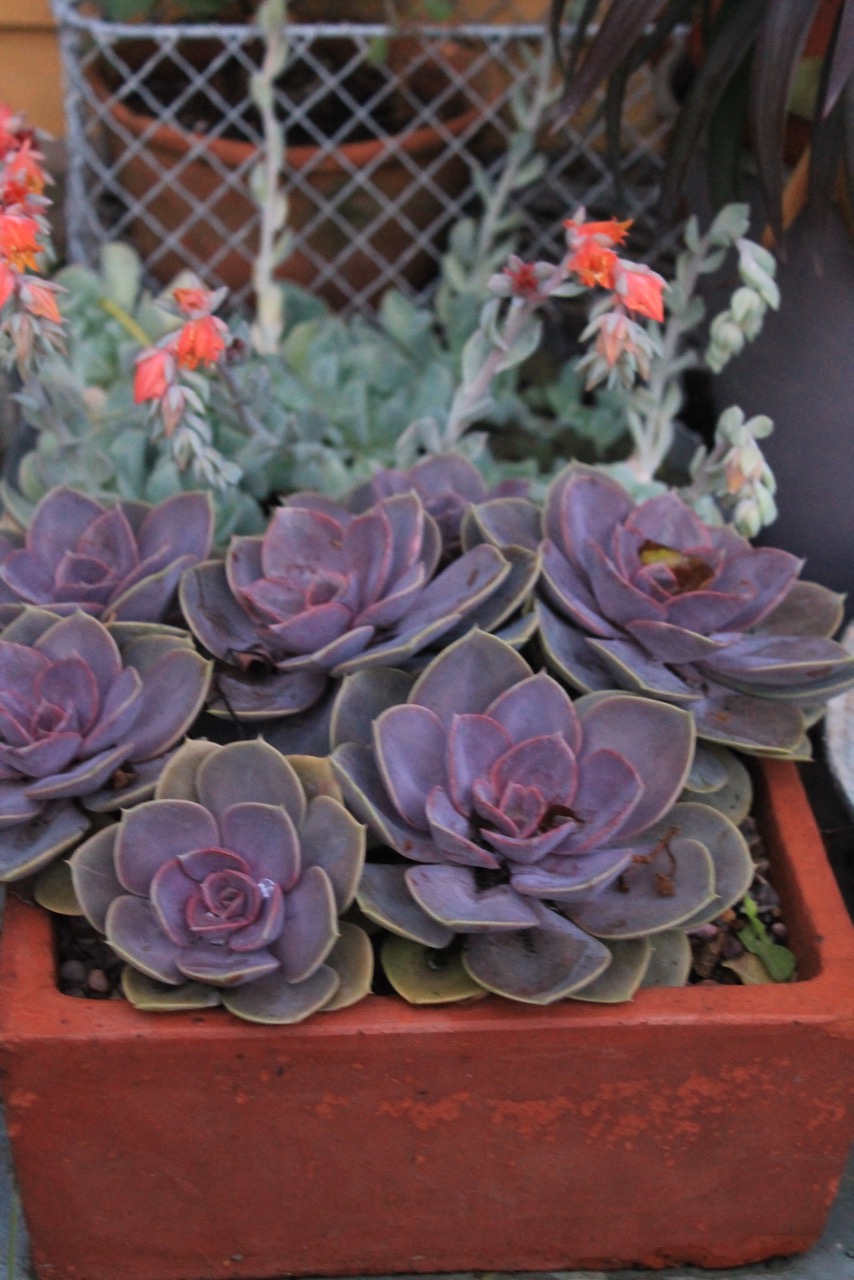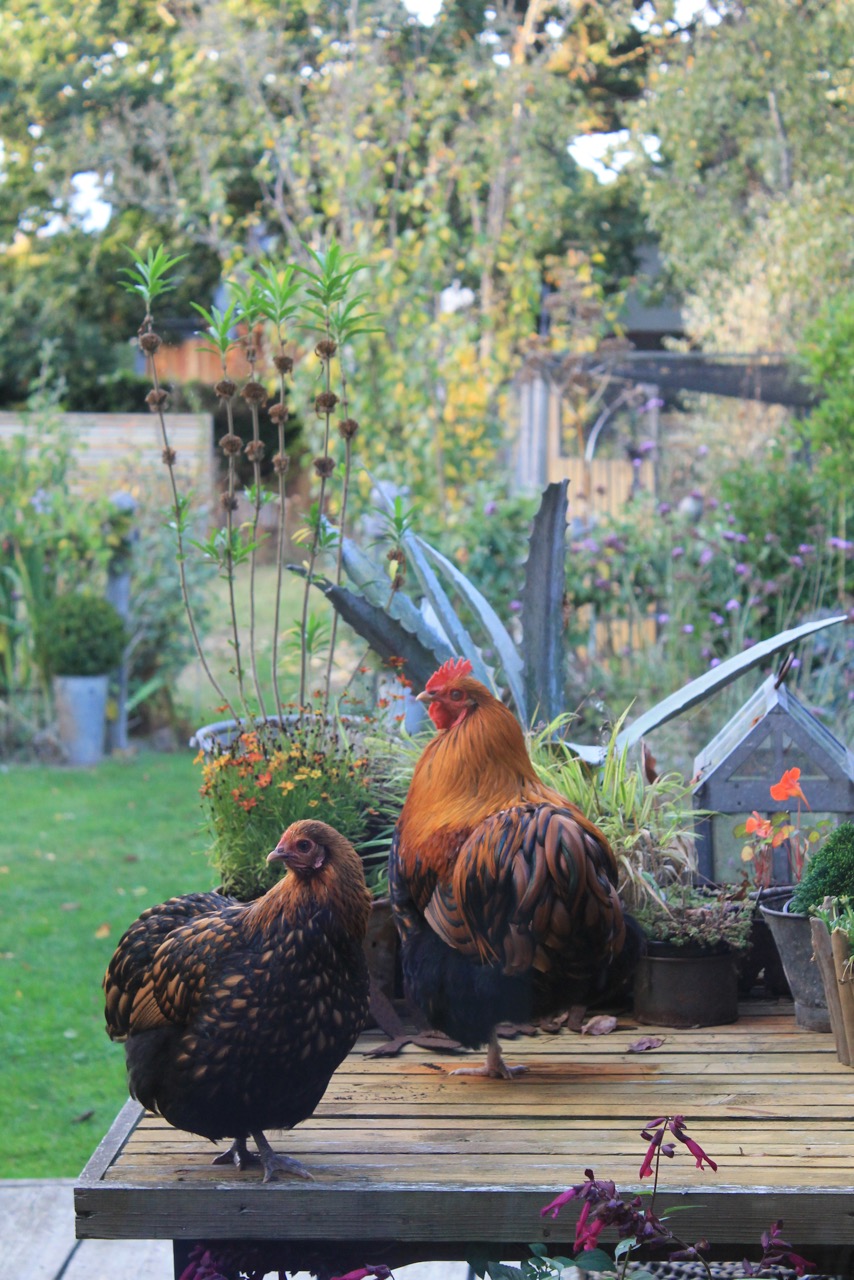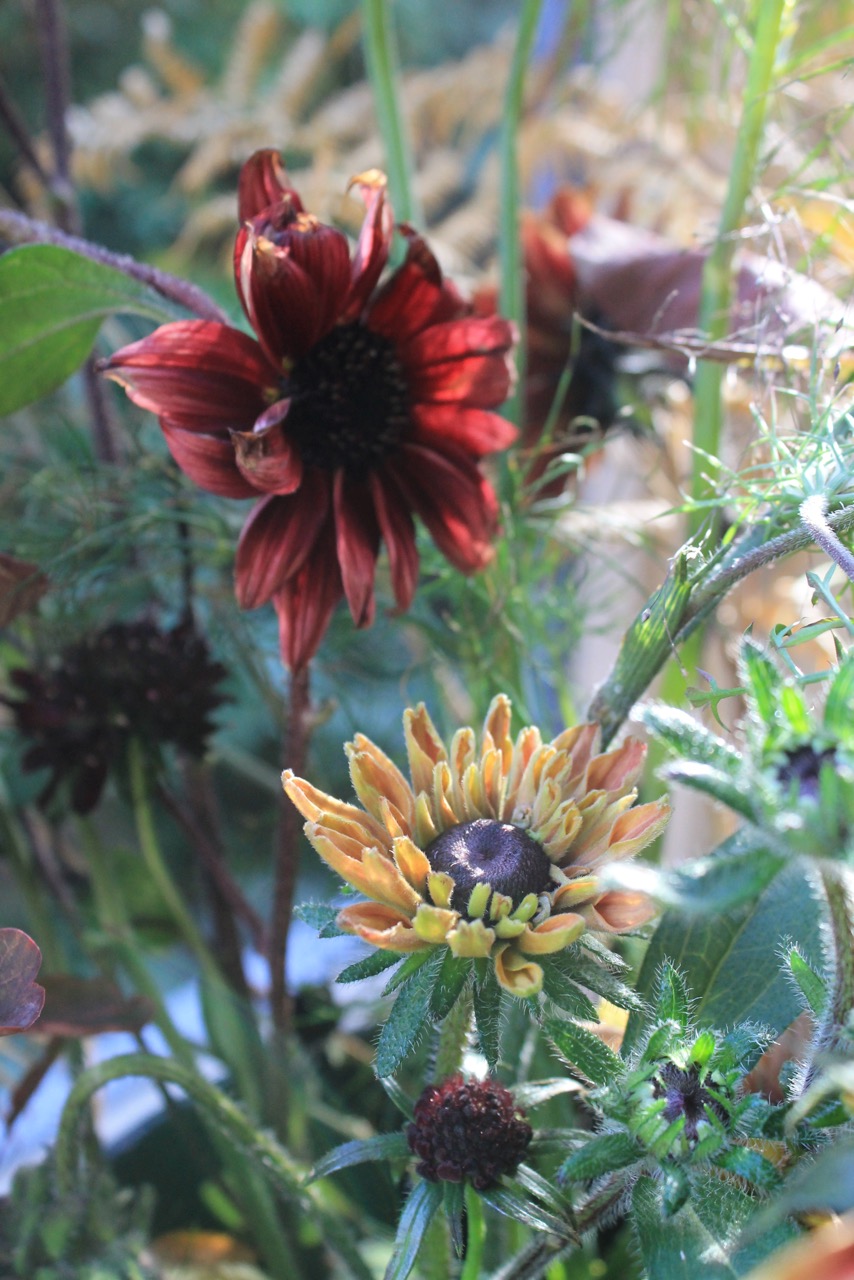Dodging the showers and carefully negotiating the slippery paths, I’m moving my tender plants undercover. I’m fed up with the nightly Russian roulette, relying on Whitstable’s famed mild climate, not knowing every time the celsius drops whether my precious succulents, leonitis, plectranthus and salvias will last the night, and of course, last winter/spring, the temperature really did plummet.
The garage is no longer a safe haven – my son tut tuts if I bring any plantlife within a whisker of his precious sportscar, the shed is full of garden paraphernalia and the spare bedroom is still a repository of other people’s flotsam and jetsum. I’d love a greenhouse (see this weekend’s Telegraph on Glasshouses), but I’m short of the right sort of sunny sheltered space, to say nothing of cash.
So, I tidy the shed and set up shelves under the window using folding garden chairs as a base. The pans of tender succulents (sedum and houseleeks live happily outside) need to be picked over to remove any fallen leaves that might rot and encourage others to decompose too, then put somewhere light, dry and frost-free. Tender perennials in pots also need to be free of rotting leaves, but must not dry out, so remember to visit them occasionally with a drink.
To take their place in spring, I’ve planted my bulbs in containers, layering compost with grit to keep their feet dry, and topping with netting to keep the squirrels from disinterring and replacing with acorns. We open for the NGS on May 19th 2019 so have planted late tulips (from Gee Tee bulbs), and added a layer of favourite Narcissus Thalia for early spring. Hyacinths and N. Cheerfulness are potted safely in the dark for a perfumed January.



